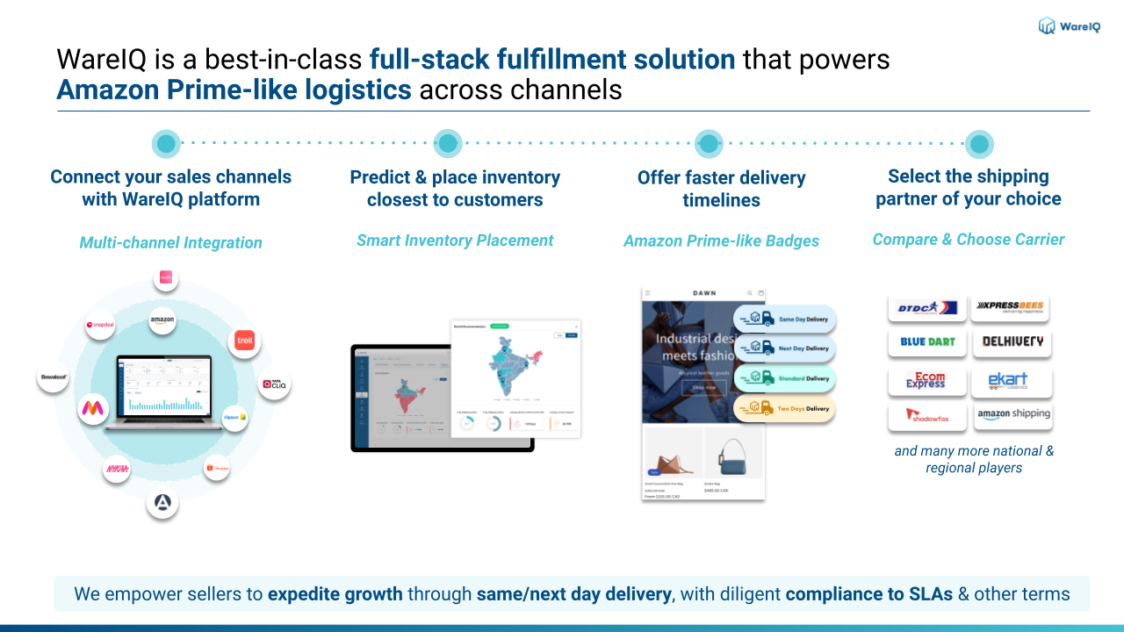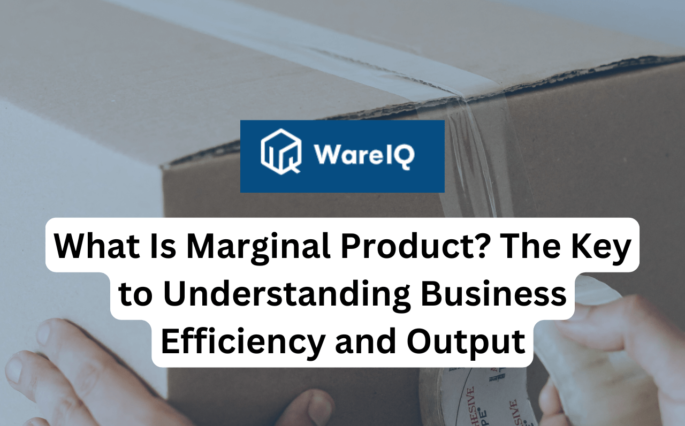Why is Supply Chain Agility Crucial to eCommerce? 6 Simple Steps To Develop a Flexible and Agile Supply Chain in eCommerce in 2025

Across all industries, businesses find it challenging to control inventories in intricate global supply networks while attempting to balance a steady, uninterrupted supply with more fluctuating client demand. As a result, inventory shortages frequently force operations to halt and even shut down, which damages a company’s reputation and profitability. In addition, businesses frequently overstock to prevent unexpected shortages, which effectively stalls functional capital and reduces returns on equity and assets.
Many businesses choose efficient procedures and systems to develop agile supply chain management in a turbulent eCommerce industry full of uncertainties and hazards.
Flexibility and resilience are two essential traits of an agile supply chain. It’s critical to distinguish this idea from the lean manufacturing and supply chain philosophies, which prioritise cutting costs and inventories wherever possible.
The capacity of an organisation to swiftly respond to shifts in demand, both in terms of volume and diversity, is known as agility. The agile supply chain uses current data to optimise operations and real-time data to forecast supply chain demand, thus boosting the entity’s overall productivity and efficiency.
We first need to comprehend agility to comprehend an agile supply chain. Understanding the benefits of agility is essential in today’s increasingly demanding corporate environment, where volatility and unpredictable demand have become the norm.
Competence, responsiveness, speed, and flexibility are key components of an agile supply chain and are crucial for daily supply chain management success. Being extraordinarily adaptable or agile is more important than speed for improving market responsiveness.
- What is Supply Chain Agility in eCommerce?
- What Distinguishes Lean Supply Chains From Agile Supply Chains?
- What are the Characteristics of an Agile Supply Chain?
- Why Is Supply Chain Agility Crucial To eCommerce?
- 6 Simple Steps to Develop a Flexible and Agile Supply Chain in eCommerce in 2025
- Conclusion
- How WareIQ Assist In Developing Supply Chain Agility For Your eCommerce and D2C Business?
- Frequently Asked Questions
What is Supply Chain Agility in eCommerce?
Supply chain agility in eCommerce is a company’s capacity to efficiently produce and deliver high-quality goods and services with short lead times and different quantities while enhancing customer value. The objective is to manage new product releases flexibly and respond swiftly to volatility based on shifts in supply and demand across customers and locations. The performance of the supply chain must be maintained to achieve agility goals. This performance can be checked using key performance indicators (KPIs), such as customer service, cost, quality, and return on net assets versus predetermined targets.
The following strategic inquiries must be addressed to achieve agility in the modern world:
- How quickly can the agile supply chain adapt to changes in demand or supply?
- To take advantage of both short- and long-term opportunities, how much change in demand or supply can the agile supply chain withstand and for how long?
- How soon can a new product be developed, made, and sold?
Structural and Operational agility are the two subcategories of an agile supply chain.
Structural Agility
It is the capacity to alter supply according to the organization’s and supply chain network’s overall capabilities. A supply chain with structural agility is built to be flexible enough to manufacture or provide service across various product lines, and it may be scaled up or down.
A company must recognise how supply chain volatility affects medium- to long-term objectives if it wants to be structurally adaptable. Based on anticipated volatility, the firm decides whether to construct (or contract out to third parties) an agile supply chain asset or additional capacity. As a result, the company can expand production in response to market demand or modify production utilisation to reflect current product trends.
Operational Agility
Making decisions regarding scheduling and using supply chain resources provides this supplementary competence.
A business must move quickly to decide how to use agile supply chain assets to adapt to actual and unforeseen changes in demand if it wants to be operationally agile. These choices frequently involve adjustments to manufacturing cycle lengths, manufacturing lot sizes, and production and order lead times. Organizations can respond to short-term supply and demand volatility with the help of this skill.
WareIQ, an eCommerce fulfillment company, empowers online brands with a superior-tech platform to compete with Amazon like service levels by bringing their average delivery timelines from 5-10 days to 1-2 days.
What Distinguishes Lean Supply Chains From Agile Supply Chains?
Agile manufacturing focuses on meeting demand in uncertain markets, while lean manufacturing eliminates waste and gauges performance through cost reduction, productivity, and other output-based metrics. As a result, agile excels in dynamic markets with high demand variation, whereas lean also emphasises stabilising demand over time through accurate forecasting.
Conversely, an agile supply chain focuses on the capacity to respond to and adapt to changes in demand and supply. A certain amount of buffer is built into its operations, which, from the standpoint of supply chain design, is one of the few other fundamental differences in an agile supply chain, allowing it to react swiftly to expected or unforeseen changes. The agile supply chain requires more flexible contracts and agreements with suppliers regarding MOQs, definite planning windows, and liability conversations. While there are many solid reasons for single sourcing, it is best to have a secondary supplier in an agile supply chain design to handle shorter lead times and/or unexpected changes in demand.
In agile, the demand tends to be unpredictable with a short lead time, so firm planning windows are typically very short. On the other hand, in lean supply chain planning, lead times in supply chains tend to be longer. At the same time, organisations focus on quick, frequent suppliers utilizing Just-In-Time (JIT) scheduling with predictable markets (through forecasting).
Lean and agile supply chains can coexist despite opposing viewpoints using different attributes. Whether lean and agile supply chain methodologies work in practice is determined by satisfied customers who receive products on schedule, with sound quality, and for a reasonable price.
According to the Pareto 80:20 rule, the top 20% of items (SKUs) that account for 80% of demand should generally be produced using a lean manufacturing strategy. Forecasting, inventory level management, and economies of scale should all be included. The remaining 80% of products (SKUs), which typically account for 20% of demand, should then be manufactured using an agile strategy, i.e., things that are made to order, have highly adaptable components, and flexible manufacturing techniques enough to adjust to demand fast.
You May Like: Importance of Sustainable Supply Chain in eCommerce
What are the Characteristics of an Agile Supply Chain?
An experimental approach is employed in an agile supply chain to address any requirements that may arise along the flow of goods and services. These specifications may apply to particular products and services. It’s also crucial how you control the flow of goods and services. All relevant factors must be considered to comprehend the subject of the agile supply chain.
The supply chain’s conventional methods are insufficient. The need to offer only top-notch goods quickly and at different production volumes has become critical due to trends. A company with an agile supply chain can quickly respond to market disturbances.

4 characteristics of an agile supply chain that are essential to recognize in the ever-changing eCommerce logistics industry are listed below.
Ability To Adjust to Unexpected Disruptions
Building a resilient supply chain requires establishing a supplier network that can survive unexpected shocks and disruptions and having the flexibility to pivot quickly in response to brand-new circumstances. To address crises in the future, businesses will only be able to hoard products if it’s impractical in many sectors and storage expenses might build up quickly.
A resilient supply chain can adjust during times of difficulty and discover fresh opportunities to add value. As an illustration, consider how textile producers retooled to satisfy the need for PPE during the COVID-19 pandemic or how distilleries switched to creating hand sanitiser.
360-Degree Visibility to Support a Holistic Decision-Making Process
Supply chain agility entails mapping out the complete supply chain and combining data from all levels to detect possible hazards, existing pain points, and possibilities. A company that has visibility can determine the whereabouts of its shipments and inventory at any given time, allowing it to respond quickly to changing circumstances.
The agile supply chain needs to be fed with real-time data from all the systems and nodes that make it up, including inventory, manufacturing, physical distribution, and shipping, to ensure that it remains current and valid for planning and forecasting. Supply chain management software must be sophisticated to make sense of all that data.
Intelligence To Identify Opportunities and Sense Trends
The trend toward automation and digitization of supply chain activities and decision-making is driven by the demand for visibility and quick responses in supply networks. Next-generation supply chain agility solutions use artificial intelligence and machine learning to collect data from the whole supply chain and extract useful information.
The benefit of using an intelligent supply chain planning system is that you can more accurately foresee, feel, and respond to opportunities concealed within hazards. In addition, disruptions allow businesses to act quickly and based on data.
Prioritizing Digital Transformation To Enhance Supply Chain Agility
Businesses can only partially remove all supply chain agility risks, at least not without limiting the opportunities created by those vulnerabilities. But by digitally modernising their supply chain, businesses can drastically reduce risks. Additionally, they should consider purchasing a supply chain planning tool that will help them obtain visibility into the entire supply chain, perform what-if analysis to plan for potential outcomes and “black swan” events and be able to adjust to changes in the environment quickly. As a result, they will increase their supply chains’ flexibility, toughness, and capability by enabling them to meet any difficulties that may arise.
Why Is Supply Chain Agility Crucial To eCommerce?
Despite unavoidable setbacks, an eCommerce logistics business can remain profitable with the appropriate technology and procedures.
For all businesses, having an agile business strategy has always been crucial, but in eCommerce, agility is vital for everything from satisfying customer expectations to cutting expenses.
Here is a summary of the benefits of supply chain agility in eCommerce fulfilment for online retail businesses.
Improved Client Satisfaction
One of a facility’s main goals, particularly in the logistics industry, is customer contentment. Supply chain management greatly influences customer satisfaction, which ensures businesses can keep their word to clients and deliver goods on schedule. 69% of customers believe they are considerably less inclined to do business with a company again if a final product isn’t delivered within two days of the scheduled delivery date.
Agile supply chain management is essential to reducing the time between placing an order and when it is delivered to a client or the entire order cycle time. A more effective and agile supply chain can reduce your total order cycle time, while a more inefficient one can increase it and affect customer happiness and retention.
Effective Inventory Management
The efficient operation of a warehouse depends on effective inventory management. Inventory tracking can increase inventory visibility and accuracy when done correctly. This offers various advantages, such as:
- Avoiding Late Shipping – Because of not realising the item wasn’t in stock, about 34% of organisations had to ship an order after the due date. Supply chain management is only complete with inventory visibility, which assists in avoiding errors of this nature.
- Lowering Entire Order Cycle Time – Delivery times of placed orders will suffer from poorly maintained inventory levels. Supply chain agility speeds up product delivery to clients and helps throughput times.
- Optimizing Demand Predictability – To guarantee a great customer experience, it is essential to forecast inventory and how much will be required based on historical trends and seasonality. The agile supply chain heavily relies on forecasting an organization’s peaks and troughs, which aids in deciding whether to increase inventory levels in response to rising client demand.
Reduced Costs
Although overhead and operating costs are inevitable aspects of running a business, supply chain agility experts aim to reduce costs and boost profits. However, your facility will incur more expenses if your supply chain is not managed well. To cut costs and increase profits, you must ensure the product management process runs appropriately from beginning to end.
Effective Labour Optimization
One of the most critical issues facing modern warehouses is labour. With more individuals leaving the warehouse sector than joining it, more opportunities are available than ever. Additionally, 71% of facilities usually need more than a month to train new employees properly. Therefore, finding solutions to physical distribution facilities’ most labour-intensive applications is more critical than ever.
The capacity to automate the process is one of the main advantages of developing agile supply chain processes. In addition, it assists in determining when and how much automation is required for eCommerce fulfilment and shopping operations.
6 Simple Steps to Develop a Flexible and Agile Supply Chain in eCommerce in 2025
Here are a few of the most popular strategies and recommended procedures that let online retailers quickly develop agile supply chains.
Implement Demand Forecasting
The practice of modelling predictive analytics based on past data to predict future demand from clients for a good or service is known as demand forecasting.
Utilizing tools for supply chain forecasting allows you to foresee changes in demand based on historical data, seasonality, and patterns. You may prepare for future promotions and flash sales, keep healthy stock levels, and ensure you have enough inventory during the hectic Christmas shopping season with effective demand forecasting.
Set SKU Reorder Points
You can utilise historical inventory and sales data to forecast when to place new orders for specific SKUs. This allows you to refill inventory on schedule and prevent stockouts and delays in eCommerce fulfilment. You can also consider future growth to determine the appropriate order size for each SKU.
The straightforward reorder quantity calculation, which involves calculating the typical daily units sold by the typical production lead time, can be used to determine this:
Optimal Reorder Quantity for an SKU = Average Daily Units Sold x Average Lead Time
Utilize Available Data
Real-time inventory levels are essential for success because they give you additional insight into your business’s operations, enabling you to take proactive measures to implement changes across your supply chain and make educated decisions.
You can learn how to optimise inventory to meet demand and keep costs low, for example, by watching, viewing, and controlling inventory levels throughout your agile supply chain in real time.
You may also use operational data to perform actions that will help you strengthen your agile supply chain and enhance the financial performance of your brand, such as forecasting demand more accurately, calculating safety stock numbers, identifying inventory turnover rates for your products, and more.
Invest In Warehouse Technology
As your supply chain grows, you will likely need to store merchandise in several different warehouses, making e-commerce warehousing a complicated procedure.
Technology that monitors and regulates daily operations in your warehouse is crucial for this reason. As a result, warehouse management is quicker and more effective.
For example, a warehouse management system (WMS) can help guarantee that inventory is received, stored, picked, packed, dispatched, and restocked in the most effective manner possible.
An efficient warehouse management system (WMS) can increase customer satisfaction by offering transparency in eCommerce fulfilment and shipping operations, incorporating supply chain agility, speedy order fulfilment, decrease in delivery inaccuracy rates, and orders fulfilled on time.
Online retailers have greater options to enhance warehouse management due to the rising demand for warehouse digitization.
The cost-effectiveness of incorporating warehouse technology can range from deploying an inventory scanner system to purchasing more sophisticated solutions, such as warehouse robotics.
Distribute Your Inventory
Despite a warehouse closure, an efficient physical distribution network can help you avoid long eCommerce fulfilment delays and meet consumer expectations. In addition, dividing your goods through several fulfilment centres may geographically reach more customers (while reducing shipping costs and accelerating transit times).
Partner With a 3PL
Operating your warehouse network, making technological investments, and streamlining processes take time and money and are only sometimes related to generating revenue.
As a best-in-class 3PL, WareIQ offers access to information, technology, and retail fulfilment solutions to safeguard, optimise, and enhance your supply chain, from product allocation and inventory control to developing a more effective shipping plan.
By working with WareIQ, you can worry less about enhancing supply chain agility and devote more time to other projects, such as product development, sales and marketing, and online customer support.
Conclusion
Agile supply chain methodologies have enabled the eCommerce supply chain to transform the system’s functions.
Practical solutions are a technique to improve the agile supply chain’s capacity to respond to and foster relationships between suppliers, customers, and manufacturers. Leaders must be equipped to handle difficulties to the best of their abilities during supply chain disruptions.
This underlines the significance of cutting-edge technology, including AI (Artificial Intelligence), ML (Machine Language), and precise data, in enabling organisations to decide best how to handle a future supply chain crisis.
How WareIQ Assist In Developing Supply Chain Agility For Your eCommerce and D2C Business?
WareIQ is the appropriate 3PL partner for B2B and B2C firms striving to ensure agility in their supply chain and promote long-term expansion.
WareIQ’s WMS helps manage the nationwide fulfilment network, offering visibility and transparency into fulfilment services and performance and access to real-time inventory and order management data.
This enables business owners to take a break from day-to-day activities while still having access to crucial information and insights that affect a brand’s operational and financial soundness.

Through a partnership with WareIQ, you gain access to a strong logistics network, which helps you save time and money to concentrate on expanding your company and maintaining your position in the market.
- Pan India Fulfillment & Darkstore Network: Plug-and-play fulfillment infrastructure with no minimums, which is compliant with Amazon Seller Flex, Flipkart Assured, Myntra and other marketplaces
- Inventory & Network Planning Excellence: Best-in-class AI models for sales forecasting, product segmentation, and inventory management to reduce inventory by 40% and increase revenue by 10%.
- Vertically Integrated Fulfillment Tech Stack: Our Fulfillment Tech Solution supports integrations with 20+ top marketplaces & D2C platforms, and prominent national, regional and hyperlocal couriers, enhancing reach by covering deliveries for 27,000+ pin codes
- Supply Chain Productivity Applications: Integrate a host of supply chain productivity apps with a single-click to your existing CRMs, ERPs & accounting software to manage your logistics workflows from one command center. Use Apps like RTO Shield to get 100% RTO protection, Branded Tracking to turn your order tracking page into a profitable marketing channel, and many more.
Trusted by 300+ top Indian brands, we are helping them accelerate online sales and expedite their growth through a synergistic combination of advanced technology, robust fulfillment infrastructure & seller enablement services!WareIQ is backed by leading global investors including Y Combinator, Funders Club, Flexport, Pioneer Fund, Soma Capital, and Emles Venture Partner.







